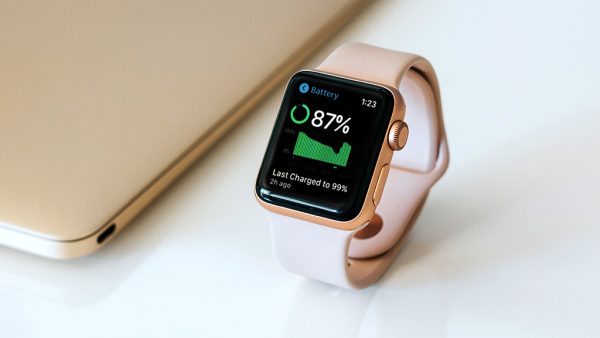
Understanding Apple Watch Battery Life
The Apple Watch is a fantastic companion, keeping you connected, informed, and fit. But how long does that trusty device stay charged? Let’s delve into the world of Apple Watch battery life and understand what factors affect it.
Apple’s Battery Life Estimates:
Apple states that their Apple Watch lineup is designed for “all-day battery life.” Here’s a breakdown of their estimations for different models:
- Apple Watch Series 8 & 9: Up to 18 hours after an overnight charge.
- Apple Watch SE (2nd generation): Up to 18 hours after an overnight charge.
- Apple Watch Ultra: Up to 36 hours after an overnight charge.
It’s Important to Remember:
These figures are based on specific usage scenarios:
a. Checking the time 90 times
b. Receiving 90 notifications
c. Using apps for 45 minutes
d. Completing a 60-minute workout with music playback from the Apple Watch
Your individual usage will likely differ, so the actual battery life you experience might be higher or lower than Apple’s estimates.
Factors Affecting Battery Life:
Several aspects can influence how long your Apple Watch lasts on a charge:
a. Display Brightness: A brighter display consumes more battery. Consider lowering the brightness if needed.
b. Cellular vs. Wi-Fi: Using cellular data drains the battery faster than Wi-Fi. If you have Wi-Fi available, connect your watch to it.
c. Always-On Display: The Apple Watch Series 5 and later offer an always-on display option, which is convenient but consumes more battery.
d. Workout Tracking with GPS: Using GPS during workouts impacts battery life. Consider turning off GPS for non-critical workouts.
e. App Usage: Certain apps are more battery-intensive than others. Monitor which apps consume the most power in your Settings.
Extending Your Battery Life:
Here are some tips to maximize your Apple Watch battery life:
a. Enable Low Power Mode: This reduces background activity and extends battery life.
b. Turn Off Always-On Display (if applicable): While convenient, it can be a battery drain.
c. Optimize Workout Tracking: Use GPS selectively and consider built-in workout options that require less battery.
d. Manage Notifications: Limit excessive notifications to conserve battery.
e. Adjust Display Brightness: Lowering the brightness helps extend battery life.
The Takeaway: A Watch That Lasts (Almost) As Long As You Do
With a combination of Apple’s efficient design and your smart usage habits, your Apple Watch should comfortably last you through most days. By understanding how different features and settings impact battery life, you can optimize your experience and keep that trusty device on your wrist for longer. Now get out there and conquer your day, with your Apple Watch by your side!
FAQs: All Day Power on Your Wrist – Apple Watch Battery Life Explained
Q: How long does an Apple Watch battery last?
A: Apple estimates vary by model:
- Apple Watch Series 8 & 9: Up to 18 hours
- Apple Watch SE (2nd gen): Up to 18 hours
- Apple Watch Ultra: Up to 36 hours
These estimates assume specific usage patterns.
Q: What factors affect Apple Watch battery life?
A: Several factors play a role:
- Display brightness: Lowering it saves battery.
- Cellular vs. Wi-Fi: Wi-Fi is more battery-efficient.
- Always-On Display (Series 5 and later): Disabling it saves battery.
- Workout tracking with GPS: Use GPS selectively for workouts.
- App usage: Certain apps drain the battery faster.
Q: How can I extend my Apple Watch battery life?
A: Here are some tips:
- Enable Low Power Mode.
- Turn off Always-On Display (if applicable).
- Optimize workout tracking (use GPS selectively).
- Manage notifications to avoid overload.
- Adjust display brightness to a comfortable level.
Q: Is there anything else I can do to improve battery life?
A: Monitor which apps consume the most power in your Settings and adjust usage accordingly.

Leave a Reply